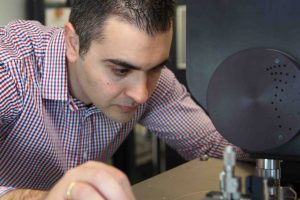The UK Space Agency is further funding eleven space projects involving UK work with international partners on innovative technology. The agency’s International Bilateral Fund is being used for Phase 2 backing of a range of companies and organisations – from the Alan Turing Institute using Artificial Intelligence to improve space operations to XCAM working on an X-ray imaging instrument to ...
Tag Archives: University of Southamption
SaxaVord progresses to vertical launches with satellite payload processing facility
SaxaVord Spaceport – based on the Shetland Islands – is collaborating with space engineering safety specialists Plastron UK to develop an advanced satellite payload processing facility (PPF). They are constructing two cleanrooms and an air lock, enabling SaxaVord to host satellites of up to 1,000kg. A capability unique to SaxaVord in the UK, the spaceport highlights. Lamba Ness The launch ...
UK Space Agency funds growth in UK regions
The UK Space Agency has awarded £1.2 million to the UK’s south-central region, and the funding includes £300,000 for the newly-formed Space South Central, which is described as the UK’s largest ‘space cluster’. The money will support Space South Central’s aims to promote collaboration and champion space-related business and R&D across Hampshire, Surrey and the Isle of Wight. According to ...
EW BrightSparks 2022 profile: Oana Lazar
Now in its fifth year of awards, EW BrightSparks sees Electronics Weekly partner with RS Grass Roots to highlight the brightest and most talented young engineers in the UK today. Here, in our series on the latest EW BrightSparks of 2022, we highlight Oana Lazar, who was an MEng Electronic Engineering student at the University of Southampton and now works as ...
Etch a metasurface with without ruining the physical surface
Researchers from the University of Southampton have found a way to make an optically-active meta-surface without altering the physical shape of the surface. Infra-red thermal control coatings and non-linear optics are potential applications. Metasurfaces are structures designed to control, for example, electromagnetic radiation using repeating structures, typically with sub-micrometer dimensions for light. Routes to forming these structures include etching away ...
Turkey dominates student avionics and aeronautics competition in Texas
Turkish universities dominated the annual global ‘CanSat’ avionics and aeronautics competition, getting first, second and fifth places. Held this year in Texas, the competition has nothing to do with satellites, but it does involve rockets, payload deployment, telemetry and, this year, autogyros. In a nut shell, CanSat 2019 required students to construct a two-part payload that was launched to an altitude ...
EW BrightSparks 2019 profile: Ricki Tura
In our series on the class of 2019, we highlight Ricki Tura, a Placement Engineer at UltraSoC and University of Southampton.
Memristors key to nano-scale analogue/digital adaptive hardware
Adding analogue processing to digital hardware is the key to adaptability and maximum battery life in the nano-scale age, according to the University of Southampton, which is advocating memristors and charge-based processing as the way to do it. Memristors are non-volatile electrically-adjustable resistors. Made from metal oxides, they scale well and are proposed as memory elements in nanometre-scale logic. “Over ...
Southampton leads £2.5m environmental technology training initiative
The University of Southampton is to lead a new collaborative organisation set up to train environmental scientists and engineers to use smart technology to make scientific observations. Funding of £2.5m has been provided by the Natural Environment Research Council (NERC) and the Engineering and Physical Sciences Research Council (EPSRC) for the Centre of Doctoral Training in ‘The use of Smart ...
How will consumers set up IoT security?
University of Southampton researchers have studied ways to ease the arrangement of IoT devices in the home. The issue is that to join a wireless network, security parameters have to be accurately entered into the IoT device, which may have almost no user interface. “IoT objects can be attacked and possibly hijacked, putting our privacy, data and safety in question. We ...
 Electronics Weekly Electronics Design & Components Tech News
Electronics Weekly Electronics Design & Components Tech News









